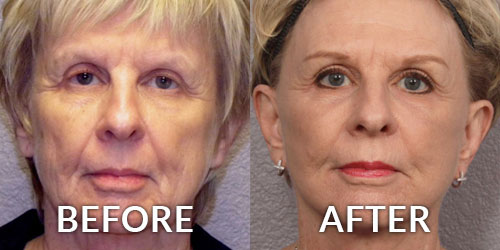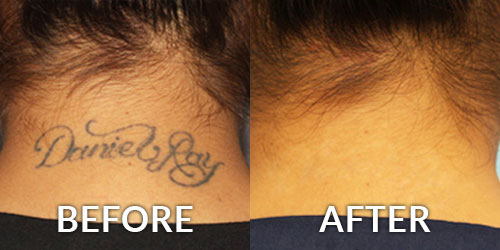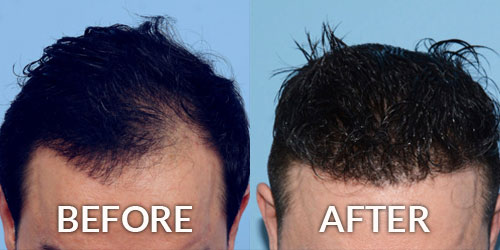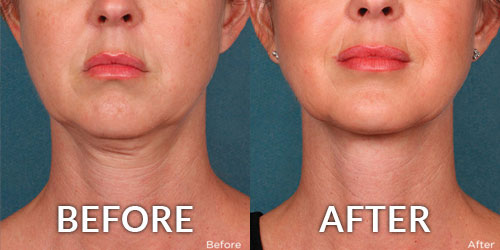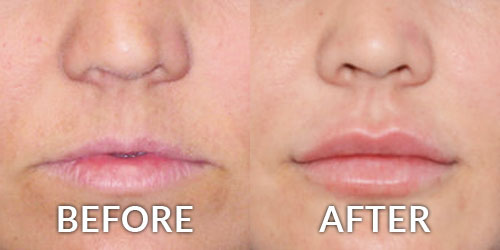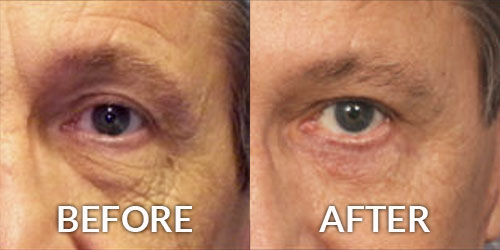Warts
Consultations offered at our two convenient locations in Phoenix and Scottsdale
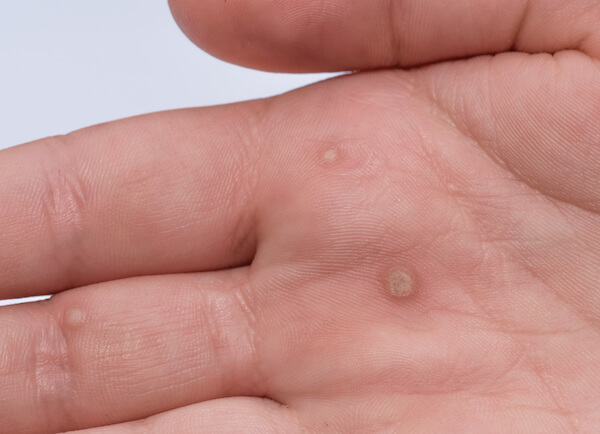
Wart removal is a medical procedure that removes a raised growth caused by the Human Papilloma Virus.
Warts are unsightly and embarrassing and can cause discomfort depending on where they emerge. Warts can occur anywhere on the body, and while they can resolve themselves in several years, some never go away. Unfortunately, warts can repeatedly reoccur in the same area. Those with certain risk factors, such as a compromised immune system, are more at risk for recurring warts. There are many strains of HPV, and several of the kind that can be sexually transmitted from contact with an infected partner can also cause cancer. Warts are not just a cosmetic concern. Those who experience outbreaks of warts in the anogenital area should be sure to be closely monitored for cancer. Unfortunately, although there are several techniques for removing the appearance of warts, there is no cure for the HPV virus. All strains of this virus are contagious, and there is the risk of spreading it to other parts of your body and to other people if you become infected.
If you’re suffering the heartbreak of painful and unsightly warts, Contact Phoenix Skin for a consultation to learn more about what you can do to be free from these stubborn blemishes. We’ve successfully treated warts for many years and will offer you compassionate and convenient service at our Scottsdale and Phoenix locations.
Contents
All About Warts
The wart is actually a benign tumor that results from infection with one of the many strains of HPV. Contrary to popular belief, toads have nothing to warts, which may be a relief for those searching for a prince. Warts have plagued humanity since ancient times, but today there are a number of procedures that medical professionals can employ to remove lingering and uncomfortable warts. Your doctor will be able to recommend the best course of treatment depending on the size and severity of your wart outbreak. It’s important to have your warts checked regularly by a medical professional to determine if they are in fact warts, and not another skin condition.
There are over 100 documented strains of the virus that causes warts, with certain strains responsible for various kinds of warts.
The human papillomavirus enters the body through a cut or trauma to the skin or contact with a mucous membrane such as the mouth or genitals. Nongenital cutaneous warts are common in children, who may frequently sustain injuries at play and are exposed to HPV and other contagious viruses while at school. The likelihood of children contracting HPV peaks in the teenage years and then declines. Activities like walking barefoot increase the risk of a foot injury and infection. Butchers and those who handle meat and sharp instruments also experience high incidences of warts. And, if you needed another reason not to bite your nails: nail biters commonly have multiple periungual warts.
Those with compromised immune systems are also at higher risk for contracting HPV. An observational study found that 90 percent of immunosuppressed patients had warts. (1)
Common Warts
These warts have a cauliflower texture on their tops and are skin-colored or gray-brown. They’re found most often on the hands but can grow anywhere on the body. This kind of wart accounts for 70% of all non-genital warts on the skin. Flat warts are another type of common wart, topped with a smooth surface, and are generally found on the face and forehead. These are common in children and rarer in adults.
Plantar warts
Plantar warts are found on the soles of the feet. They are generally rough and spongy with dark pinpoints that are in fact tiny capillaries that supply blood to the wart. Unlike a corn or callus, they will bleed when penetrated. The color of these warts can be gray, brown, yellow, or skin-colored. Plantar warts can be painful from the repetitive trauma and pressure of walking or running.
Subungual and periungual warts
These warts have a rough texture and a cauliflower-shaped top. Periungual warts are commonly found around the fingernails or toenails, while the subungual wart is found underneath the fingernails and toes. When left untreated, these warts can become painful as they grow. Over time, subungual warts can grow until they elevate the nail to the point where it detaches from the nail bed completely.
Genital warts
Unfortunately, human papillomavirus (HPV) infections are the most common sexually transmitted infections in the world. Most sexually-active individuals are likely to be exposed to HPV infection during their lifetimes. More than 40 variants of HPV infect the anogenital tract and other mucosal areas. Persistent infection with these strains of the virus has been established as a necessary cause of cervical cancer. (2)
Adding to this virus’s insidious nature is the fact that it can go undetected and does not always result in an outbreak of genital warts. Those unknowingly infected can pass it on to their partners in a number of ways and is not limited to sexual intercourse. Current figures suggest that visible genital warts are present in approximately 1% of sexually active adults in the United States and that at least 15% have an infection without experiencing symptoms. (3)
If you’re experiencing small gray or flesh-colored warts in the genital or anal area, seek medical advice. Phoenix Skin is the expert in diagnosing and treating genital warts and HPV in Phoenix, Arizona. Our professional staff in Phoenix and Scottsdale have been treating genital warts (also known as penile warts, anal warts, vaginal warts, rectal warts) and HPV infections for over 20 years in a confidential, caring, and compassionate manner.
Treatment For Warts
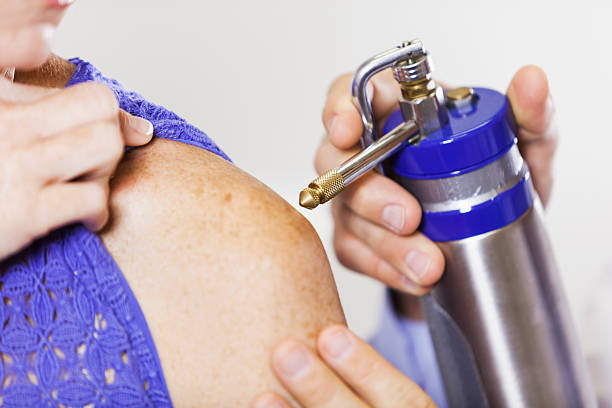
Treating an outbreak of warts does not eliminate the HPV infection. Currently, there is no cure for this virus. However, there are several ways to remove unsightly or painful warts that can severely affect a patient’s well-being and self-esteem.
Warts can be removed from the affected areas by:
Topical applications
These applications may include a number of chemicals that irritate the skin and cause it to peel until the wart growth has been eliminated. This may require several sessions, depending on the extent and severity of wart growth.
Cryotherapy
This procedure uses an extremely cold substance, usually liquid nitrogen, to kill the tissue of the wart and remove the growth. The nurse or doctor may choose to apply a topical anesthetic, as this may be painful during and after the procedure. There is the risk of scarring, and the area should be kept clean to prevent infection. Cryotherapy may also require several sessions to remove the growth altogether and target the root of the wart.
Surgical Removal
In some cases, it will be necessary to excise the entire growth from the skin. This is usually the solution for plantar warts, whose location makes extended treatment regimens too painful. Receiving treatment from an experienced dermatologist with plastic surgery training can ensure a meticulous surgery and sutures that reduce the chance of scarring.
Candidates
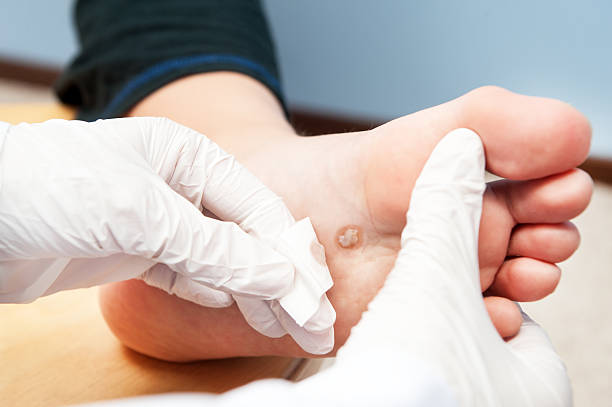
Candidates for wart removal struggle with obtrusive warts that over-the-counter treatments have failed to eliminate. Those afflicted with warts on other parts of the body may find that they have outbreaks that are impossible to treat at home. Not all warts can be treated with the medication available at drugstores. As with any skin growth, it is crucial to seek medical advice to properly diagnose warts and eliminate the possibility of other skin conditions. Dr. Lee Laris has been practicing since 1992, and the board-certified team at Phoenix Skin is qualified to address all of your dermatological concerns.
Personal Consultation
Treatment for warts is an individualized process, with many factors to consider. During your personal consultation, we’ll determine the appropriate course of treatment for your needs. The staff at Phoenix Skin understands that treating warts can be an embarrassing and uncomfortable process, and we’re here to make sure that you have the best possible experience. Those who experience wart outbreaks should be monitored closely by a physician to avoid unnecessary complications. Dr. Laris has been a dermatologist in Arizona for over 25 years and will put his expertise to work for your wart problem.
Call Phoenix Skin in Scottsdale at 480-473-9111 or Phoenix at 602-222-9111 to schedule your informative consultation today.
Recovery and Results
Unfortunately, wart removal does not cure the underlying virus that causes warts to appear. Removing troublesome warts can greatly improve comfort and confidence. The Phoenix Skin team will give you all of the information you need to care for your treatment area, prevent infection, and ensure a speedy and comfortable recovery. You can learn more about the services that Phoenix Skin offers patients in Arizona by following our blog.
How Much Does Wart Removal Cost in Arizona?
Final costs for wart removal vary among patients. You’ll receive an accurate quote for your wart treatment during your personal consultation at Phoenix Skin. Your cost will depend on the treatment method recommended for you and the size and extent of your warts. Phoenix Skin Medical Surgical Group can offer payment financing for patients who qualify. Your health insurance may cover part or all of the costs associated with diagnosing and treating your warts. Keep an eye on our specials page for great ways to save money on the wide range of services offered at Phoenix Skin.
FAQ
What causes warts?
Warts are caused by the Human Papilloma Virus. This virus enters the body through openings in the surface of the skin.
How do I know if I have warts?
It’s always best to seek medical advice for any kind of unusual skin growth. In the case of genital warts, it’s possible to be infected without showing symptoms. Your doctor can screen you for this infection.
References
- Mulhem E, Pinelis S. Treatment of Nongenital Cutaneous Warts. American Family Physician. 2011;84(3):288-293. Accessed February 22, 2021. https://www.aafp.org/afp/2011/0801/p288.html
- Trottier H, Franco EL. The epidemiology of genital human papillomavirus infection. Vaccine. 2006;24:S4-S15. doi:10.1016/j.vaccine.2005.09.054
- Koutsky, PhD L. Epidemiology of Genital Human Papillomavirus Infection. The American Journal of Medicine. 1997;102(5):3-8. doi:10.1016/s0002-9343(97)00177-0


